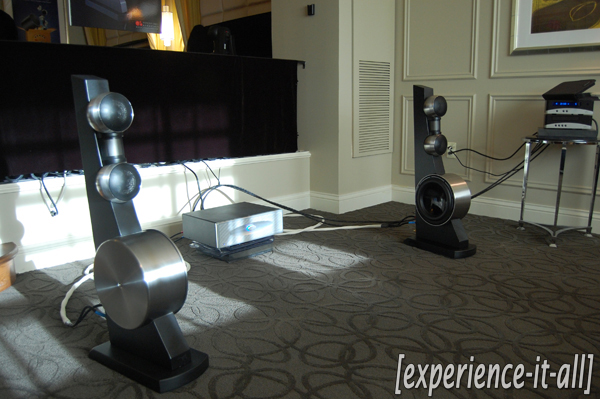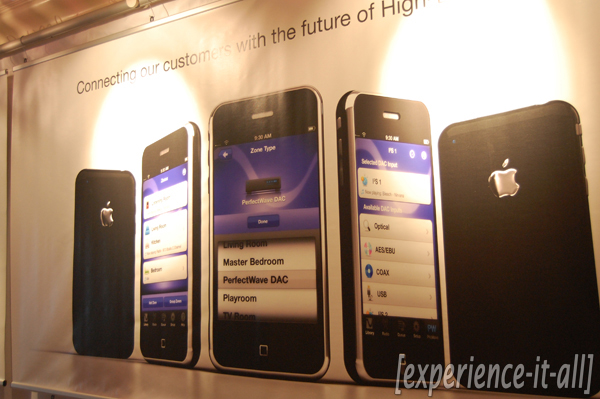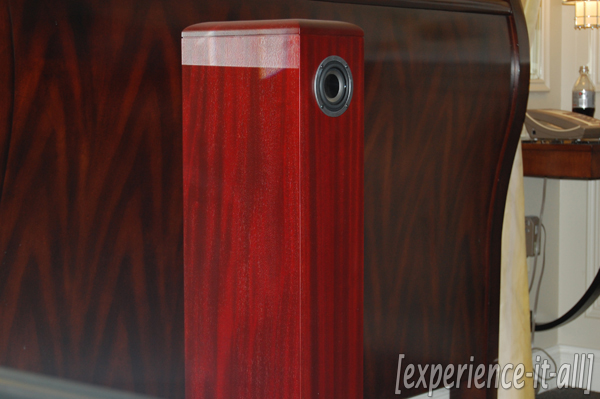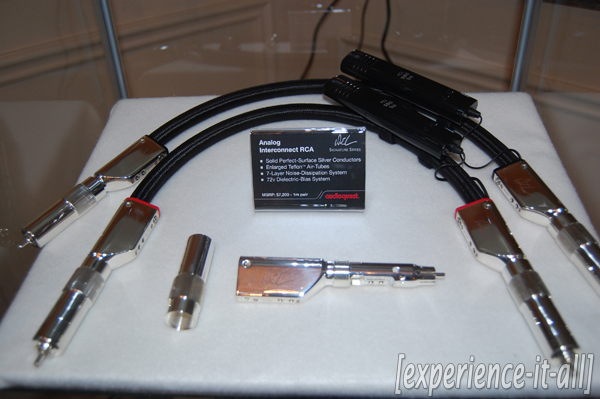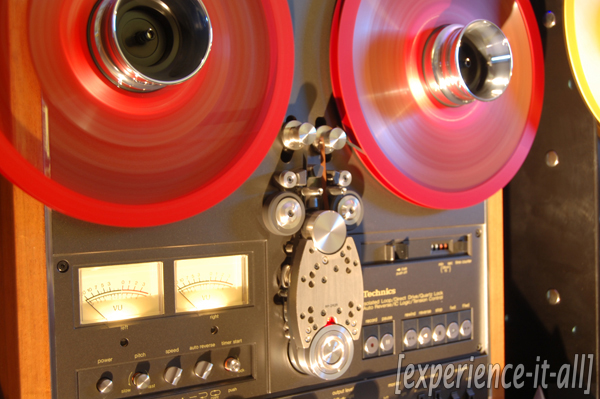

First let me start by saying that I am sorry about all the confusion. I had originally promoted this page to be a source for a “liveblog” (meaning up-to-the-minute live coverage) of the Microsoft keynote. Unfortunately due to many mishaps I was forced to cut the live out of liveblog. However, I was able to successfully record everything that did happen and you will find a full summary of the keynote below. Also, be sure to check out the large gallery of pictures from the event. As a press member, I was able to get up close and personal to Steve Ballmer and crew, so check ’em out!

After waiting in line for about an hour, I walk into the Hilton Center presentation room and quickly grab the closest seat to the stage. At about 6:15PM, the announcer gives his usual instructions to turn off cell phones and be seated for the keynote. Music from Franz Ferdinand and Phoenix abruptly gets louder as everyone expects the show to begin. Promptly at 6:35PM the lights in the room go down, then up, some computers crash, and the main center-stage screen turns black. The announcer explains, “…we’re having a small power problem.” Funniest sight of the night–a few of the computers set up on stage went into Windows recovery mode. Oh boy. Finally, at around 6:54PM the lights go down for real this time, the CEA logo shows up on screen, and the Black Eyed Peas’ “I Got a Feeling” plays behind a short video of what’s to come this week on the show floor. Then Gary Shapiro came out to welcome us to CES (“the world cup of innovation”) and say how bad the economy has been and how well the tech industry has plowed through it. Finally, at 7:00PM (a full half hour behind schedule) Microsoft CEO Steve Ballmer is introduced to the stage.
Ballmer begins by saying how technology has impacted people all around the world, even through economic hardship. To show an example, he plays a video that contains SNL’s Seth Myers. Myers talks about how tech has changed his life, with focus on voice chat, video games, eBay, and Twitter. He summarizes it all by saying, “Thanks technology…oh I’m wasting my life.” The bit was funny and received a good amount of laughs. Next Ballmer explains that the presentation will focus on three aspects: the evolving PC, the cloud, and natural user interfaces (or NUIs).

Ballmer dives in with the mention of their latest foray into the search engine business with Bing. “Bing and we Bing. Bing, Bing, Bing!” OK, Ballmer, calm down now. “I want to take a closer look at some of what we delivered in 2009.” (1) Xbox: Project Natal is coming soon; over 39 million Xboxs around the world; over $20 billion in total game revenue; new Xbox Live account is created every second. (2) Bing: over 11 million new users; anticipates what users are really looking for (remember, it’s a “decision-engine”); Maps, PhotoSynth; Microsoft and HP are teaming up—Bing will become the official search engine on all HP computers. (3) In-car technologies: Ford Sync (new look is on the way); Fiat sold its one millionth with Blue & Me and eco:Drive; Microsoft is partnering with Kia Motors to create a new in-car system based on Windows due out Q3 2010. (4) Zune: Zune HD, Zune Marketplace; video offered on Xbox Live. (5) The mobile space: Windows Mobile; he holds up a HTC HD2 (running WindowsMo 6.5), which is revealed to be coming to the US on T-Mobile. (6) Windows 7: 3 goals–faster, simpler, enable a world of new possibilities for developers, manufacturers, and consumers; “Windows 7 is the fastest selling OS in history,” 94% customer satisfaction, “There’s a Windows 7 PC for everyone,” “4 million Windows applications in all.” “enough talking about Windows 7, let’s show you.” After touting Windows 7, Ballmer introduces Ryan Asdourian, Senior Project Manager at Windows, to the stage to show off some new Windows 7 PCs and more.

There’s a bunch of shiny computers sitting on a long table to stage left, and Asdourian walks Ballmer on a tour through them. There’s an Sony all-in-one PC, a Lenovo A300, the stunningly thin Dell Adamo XPS (he demonstrates the touch lid), the ASUS NX90, a bunch of tiny netbooks including ones from Lenovo, gaming laptops (Ballmer puts on 3D glasses as Asdourian plays a quick round of a racing game), and smaller PCs, the Acer Revo and Dell ZinoHD. They were going to top it all off with a PC built into a TV, but due to the early technical difficulties they could not. Bummer.

Asdourian exclaims he is now going to play the part of a student to show off the software side of things. He tours Ballmer through a bunch of new features in Windows 7. First he shows off the new Bilo e-reader software. Bilo will offer over one million books, it allows pictures and embeddable video, and it can even read the text aloud to you! Then the not-yet-released PowerPoint 2010 is launched. They demo document syncing between two different PowerPoint windows, show off a few new snazzy PP transitions, and Ballmer types “Developers, developers, developers.” Yes. Many laughs. Next Asdourian plays a video in Windows Media Player of a Seahawk mascot jumping out of a plane. Ballmer calls this act insane, but not as crazy as the Seahawks season. Ouch. Then he switches over to Bing and talks about Bing Maps. He uses Bing Maps to reveal the exact location the plane jumping took place, showing off some very neat 3D effects and zooms. He also showed off a new Maps effect–the ability to make surroundings more “realistic.” He added animated snowflakes to the maps location. Cute but not functional; moving on… Asdourian shows how you can watch TV on your PC. “I can watch four HD channels at once time here.” Next he demos front-end Internet TV using Windows Media Center in Windows 7. Networks like CBS and The CW offer content here. He “surprises” the audience and says that he in fact was the Seahawk fan who jumped out of the plane and reveals another video to prove it. OK, enough, we get it. Microsoft Mediaroom is next. Mediaroom 2.0 is “the next version of Microsoft’s IPTV solution for service providers. He announces that AT&T subscribers to UVERSE will be able to use it on their Xbox 360s later this year. This announcement is pretty rad; AT&T UVERSE subscribers will have the ability to use their 360s as a set-top box! He demos Mediaroom on the big screen and shows how you can transport video content to a mobile device (he uses an HD2 to prove his point).

Next Ballmer takes the baton and reveals the next form factor of the PC, the “Slate PC”. (Interesting label, hm Apple?) Now sitting on the long table are three slate PCs from Pegatron, HP, and Archos. He holds up and gives a short demo of the HP model. It features multitouch and runs Windows 7. Beyond that, no other details were revealed. Kindle software is demoed with touch-based page flicking. Media software is opens and Ballmer awkwardly taps a couple times to begin playing a second Seth Meyers video. This time he’s talking about “everything important that’s ever happened in tech.” (That is, video games, cell phones, and the Internet.)

Ballmer peaces out for good (wait, no goodbyes?) and Robbie Bach, President of the Entertainment & Devices Division, walks onto stage to talk Xbox. He’s really excited about the next year in video games thanks to the impending launches of Mass Effect 2, Crackdown 2, Splinter Cell: Conviction, Fable 3, add-on content for MW2, and Alan Wake. For this reveal, a fog machine splashes some grey onto the stage and ceiling lights flicker like flash lights. He also describes the game as a mix between “TV show Lost as written by Stephen King and directed by David Lynch.” Doubt it but OK. Lastly, but of course, there’s Halo: Reach. The newest trailer we have already seen still gets the audience pumped for its Fall 2010 release. He discusses other services that Xbox Live offers besides online gaming, namely Netflix, Avatar merchandise, music downloads for related games, Facebook, Twitter, and LastFM to name a few. He mentions the recent Zune Marketplace integration with Live and demos its 1080p instant on streaming capability with a quick clip from Harry Potter and the Half Blood Prince. Next up is something new called Game Room. It’s a place where your avatar can enter his personal arcade and play retro classics like Millipede and Astrosmash. This spring you will be able to play 30 arcade games on Xbox 360 and a Windows PC. Oh–and you only have to buy a game once on a platform to play it on the other. Bach played a short video–ahem, a “showdown”, between avatar versions of himself and Ballmer playing the arcade games against each other. Last he dives into Project Natal goodness. He says that Microsoft has spent 30 years studying natural user interfaces and all of their hard research will culminate with Natal. He shows a video featuring a bunch of Natal developers and they explain the hard work and excitement that went into this project. Notable quotes: “What Natal does is it evaluates trillions of body movements a thousand times a second;” and “From the technology side is to make it seamless: you act, it understands.” The big reveal? Project Natal (still a codename) will be available holiday 2010. And as we know, it will work with all existing Xbox 360 hardware. After a short quip about the future of innovation, Bach thanks the audience and leaves the stage.
Wow, really? That’s it? Those are the phrases that instantly popped into my head after Bach left the stage and the house lights turned back on. Are you kidding me? For a Microsoft keynote this was terribly underwhelming. No crazy cool reveals and demos, and more importantly, no Ballmer meltdowns (although he did mention “developers” a couple times). For the most part this year’s keynote reiterated many things we had already been made aware of in the past (important MS innovations of 2009, the simplicity of Windows 7, already announced 360 titles, etc.) Sure, the Mediaroom upgrade and announcements, the demo of Bilo, the slate PCs, and the Natal release window were interesting and noteworthy, but other than that…meh. Starting with the ominious power outage this year’s Microsoft keynote at CES proved to be an uneventful gathering.
Look after the break for the intro videos for the HP “slate PC” and Xbox 360’s Game Room.
Continue reading Live blog :: Microsoft keynote with CEO Steve Ballmer (update: not live, but still “blogged”) →






















































































